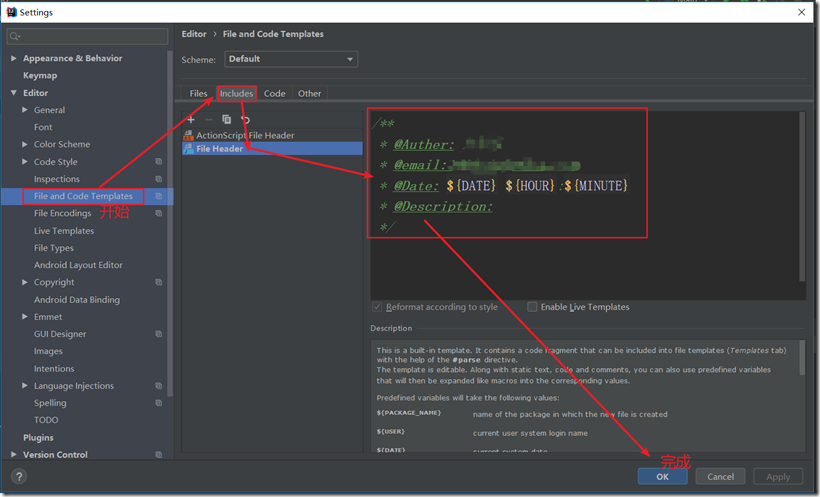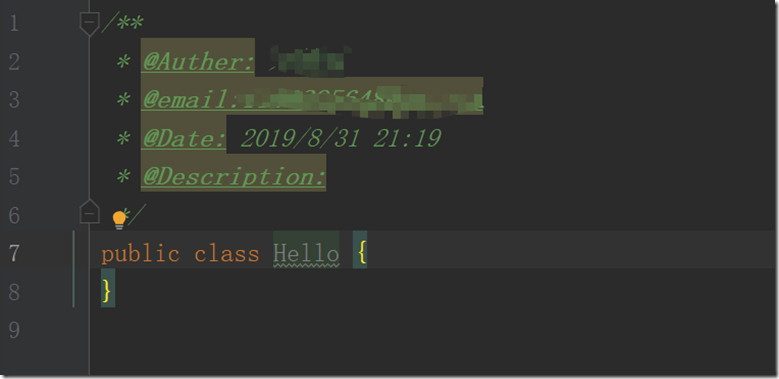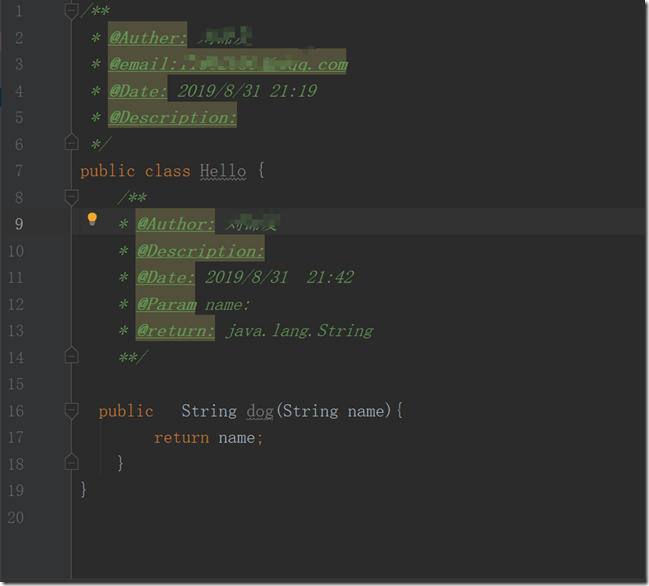1. 生成类注释
打开Preferences-->Editor-->File and Code Templates,右侧选择Filestab页,找到Class、Interface,可以看到右侧模板里引用了一个File Header.java模板,如下图:
模板变量说明
${PACKAGE_NAME} name of the package in which the new file is created
${USER} current user system login name
${DATE} current system date
${TIME} current system time
${YEAR} current year
${MONTH} current month
${MONTH_NAME_SHORT} first 3 letters of the current month name. Example: Jan, Feb, etc.
${MONTH_NAME_FULL} full name of the current month. Example: January, February, etc.
${DAY} current day of the month
${DAY_NAME_SHORT} first 3 letters of the current day name. Example: Mon, Tue, etc.
${DAY_NAME_FULL} full name of the current day. Example: Monday, Tuesday, etc.
${HOUR} current hour
${MINUTE} current minute
${PROJECT_NAME} the name of the current project
建立类自动生成类注释,如下图所示
2. 生成方法注释
打开Preferences-->Editor-->Live Templates,为了方便管理,新建一个分组来管理自己添加的Live Template,名为myGroup,
复制粘贴以下的模板
**
* @Author:
* @Description:
* @Date: $date$ $time$
$params$
$return$
**/
设置变量

params变量,放在Default value中
groovyScript("if("${_1}".length() == 2) {return '';} else {def result=''; def params="${_1}".replaceAll('[\\[|\\]|\\s]', '').split(',').toList();for(i = 0; i < params.size(); i++) {if(i==0){result+='* @Param ' + params[i] + ': '}else{result+='\n' + ' * @Param ' + params[i] + ': '}}; return result;}", methodParameters());
return变量,放在Default value中
groovyScript("def returnType = "${_1}"; def result = '* @return: ' + returnType; return result;", methodReturnType());
设置快捷键
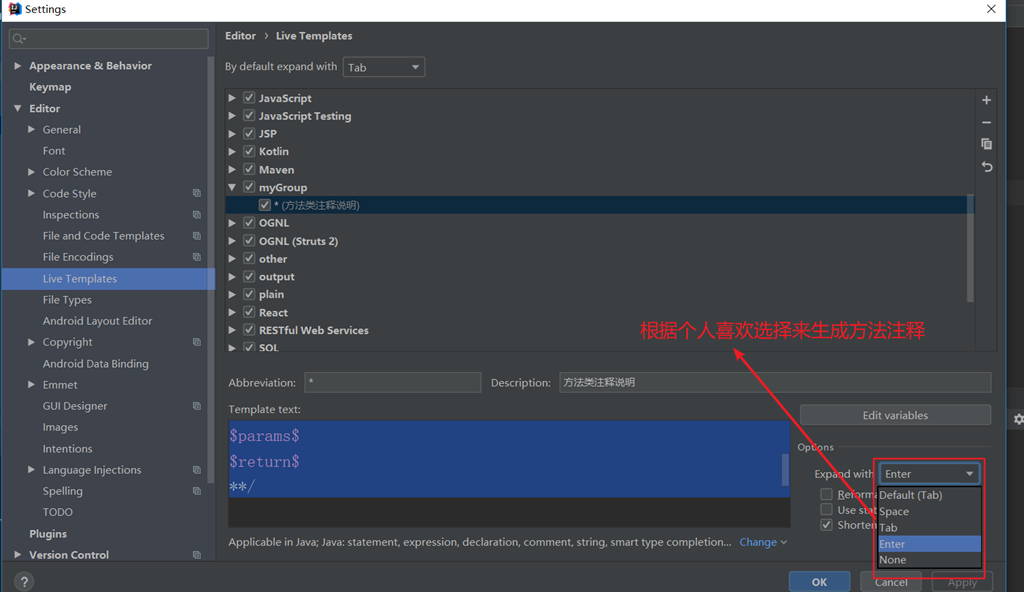
设置范围为java
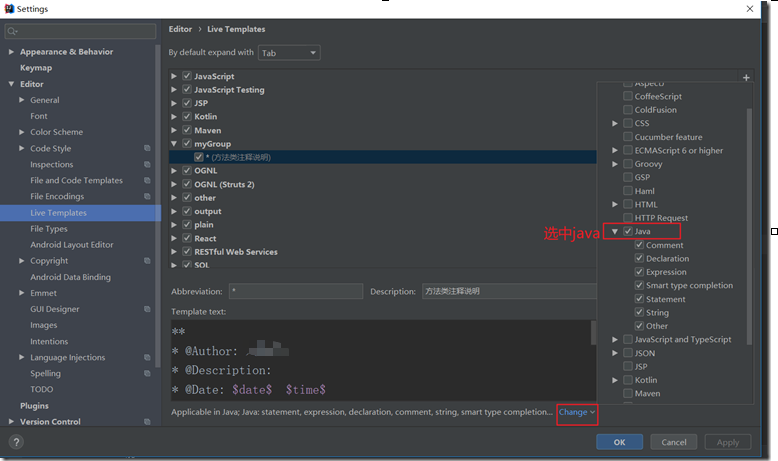
使用说明
需要自己打出来/*,然后按回车生成方法注释。
